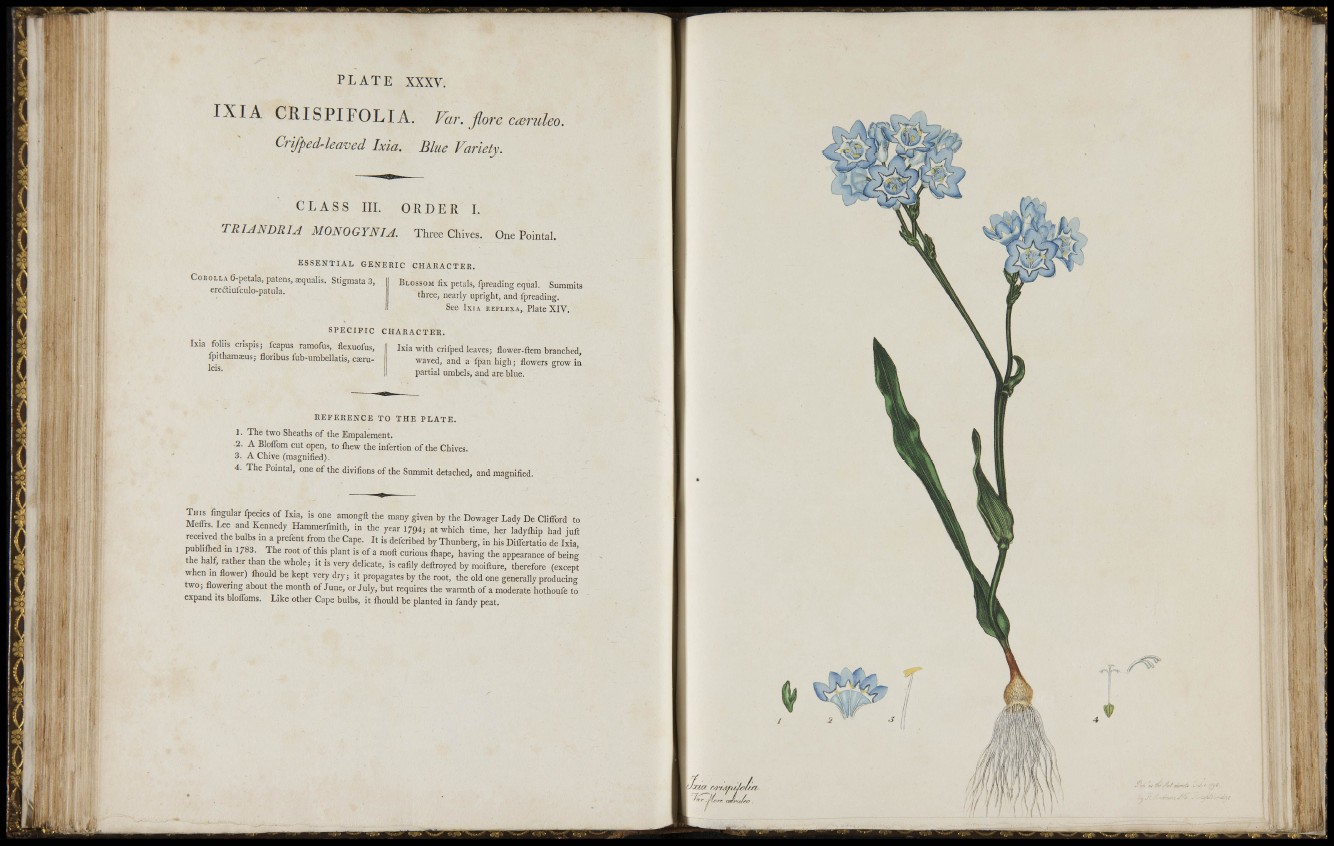
1 r'i
* :
f j '
A J ;
i,.i. ..till:
(i'l > .
a.
Si
P L A T E XXXV.
I X I A CRISPIFOLIA. Far. flora c^ndeo.
Cri/ped-leaved Ixia. Blue Variety.
C L A S S IIL ORDER L
TRIANDRIA MONOGYNIA. Three Chives. One PointaL
E S S E N T I A L GENERIC CHARACTER.
COKOLLA 6-petala, patens, aequalis. Stigmata 3,
erc£liufciiIo-patula. BLOSSOM fix petals, fpreadiug equal. Summits
three, nearly upright, and fpreading.
See IxrA KEFLEXA, Plate XIV.
Ixia foliis erispis; fcapus ramofus, flexuofus,
fpithamajus; floribus fub-umbellatis, caeruleis.
S P E C I F I C CHARACTER.
Ixia with crifped leaves; flower-ftem branched,
waved, and a Ipan high; flowers grow in
partial umbels, and are blue.
R E F E R E N C E TO THE PLATE.
1. The two Sheaths of the Empalement.
.2. A Bloirom cut open, to Ihew the infertion of the Chives.
3. A Chive (magnified).
4. The Pointal, one of the divifions of the Summit detached, and magnified.
T H I S Angular ipeaes of Ix.a, is one amongft the many given by the Dowager Lady De Clifford to
MelTrs. Lee ar.d Kennedy Hammerfmith, in the year 17945 at which time, her ladyflfip had juft
received the bulbs m a prefent from the Cape. It is defcribed by Thunberg, in his Differtatio de Ixia
pubhflied m 1783. The root of this plant is of a moft curious ihape, having the appearance of being
the half, rather than the whole; it is veiy delicate, is eafily deftroyed by moifture, therefore (except
when m flower) fliould be kept very dry; it propagates by the root, the old one generally producing
two; flowering about the month of June, or July, but requires the warmth of a moderate hothoufe to
expand its blolToms. Like other Cape bulbs, it Ihould be planted in fandy peat.
'A.; dt At n.^,/-. '/yi.
m
t - i i t
111' i • .,
i : -i
ill
illl
•'il
a. • •:.
t
f- '
M
S •
11I- :,• ••
i
I
V i
I
I .i
ii
r : m
ttii